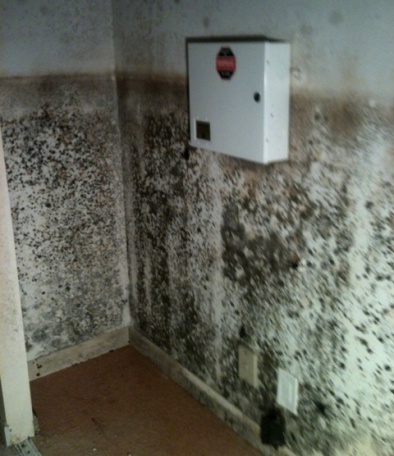Find a Mold Specialist Now
Click or Call, Toll-Free 24/7
Does Insurance Cover
Mold Removal?
If you find mold in your home the first question you are probably going to ask is, does insurance cover mold removal? A home insurance policy is purchased to cover any potential damage that may occur to a home, but the problem is that many homeowners are unaware of the fact that there are potentially dangerous situations that may occur in the home that might not be covered by your insurance policy.
Insurance policies can be cumbersome and tricky when it comes to coverage details, especially if mold is involved. Most insurance policies for homeowners do not specifically cover mold damage, although there are specific situations when they will pay for mold cleanup. The general rule is that mold cleanup will be covered if it is the result of a coverable event. So for example if a pipe bursts and it causes mold, that should be covered. If you have a humidifier built into your heating system and you set it too high and it causes mold, that won’t be covered. Mold will generally not be covered if it was caused by neglect or a lack of maintenance.
Most states have limitations on the amount of mold coverage that can be paid out by an insurance company, so it is a good idea to find out if there are limitations in the state where your home is located. Also, it is common for homeowners insurance policies to not cover flood damage, or any mold that results. If your policy doesn’t cover flooding, you might want to consider having a separate policy for flood insurance. Keep in mind that almost any water intrusion into your home at the ground level would be considered flooding and not be covered.
Read The Fine Print
When you are reviewing your home insurance policy, the most important thing to do is to read the fine print and understand the coverage. Ask questions of your insurance agent, such as:
- Are there limits to the insurance payout for damage that occurs to the home?
- Will mold remediation be limited to certain types of disasters?
- Will basic insurance cover mold removal, or would a higher coverage policy be better?
- Is air testing covered to confirm that all traces of the mold have been removed.
Why Mold Remediation Insurance Should Be Considered
Often, insurance policies will have extras that can be added on to the policy, so ask your insurance agent if there is a rider that offers additional mold coverage. The add-on can cost anywhere from a few hundred dollars a year, up to $1,500 per year. But, the additional costs are worth it, especially if you are in an area that is prone to mold.
The cost of the add-on to your policy will depend on the size and type of home that you have as well as the climate where you live. Mold remediation insurance is usually more expensive for older homes and areas with high humidity. Newer construction, as well as areas in a dry climate, often have lower premiums for mold cleanup. Some areas where the risk is too great might not be able to qualify for mold insurance.
Consider this: mold remediation can cost $7,000 - $10,000 or more for a minor flood. This is because the area needs to be completely sanitized and many of the materials need to be discarded and replaced. Playing an extra few hundred dollars a year is well worth it if you were to have a mold problem that can cost over $10,000 to cleanup and repair.
The picture below shows a basement with extensive mold after a flood.

Cleaning Up a Mold Problem
If an area of your home has already been contaminated by mold and your insurance policy covers the cleanup, then the first step for you is to have several mold remediation specialists come to your home and give you an estimate. You want to get a few estimates and select the company that you are the most comfortable with.
There is no cost for an initial inspection and estimate, and all insurance companies will require written documentation for any costs associated with the cleanup and repair. Mold remediation companies are used to working directly with insurance companies and in most cases can handle all the paperwork for you. You can follow this link to get a list of approved mold remediation specialists in your area.
If your insurance policy doesn’t cover the cleanup costs, you have two options: pay a professional to remove the mold, or do it yourself. Either way you should still take advantage of the free inspection so you can get a better understanding of exactly what needs to be done. For more information on doing the cleanup yourself and what is involved, follow this link.
Return From Insurance Cover Mold Removal To Black Mold Health Symptoms Home Page




